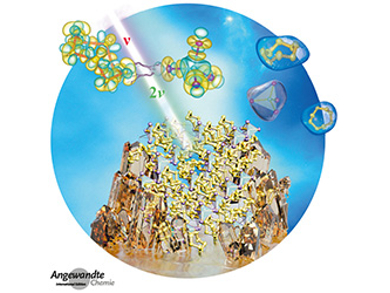In his Nobel lecture, 2017 medicine laureate Michael Young recounts his 40-year journey from drosophila’s clock mutants to human circadian disorders. How does the biological clock help to prepare our physiology for the fluctuations of the day? In Minireviews, C. Wentrup discusses recent developments in the fundamental chemistry of carbenes and nitrenes, and J. Yoon et al. summarize innovative strategies for hypoxic-tumor photodynamic therapy. In her Guest Editorial, M. Pischetsrieder points out global food-related challenges, and the contributions and opportunities for chemistry.
In the Communications section H.-G. Xue et al. present SnI4·(S8)2—a novel adduct-type infrared second-order nonlinear optical crystal (see picture). C. Hertweck et al. investigated enzymatic thioamide formation in a bacterial antimetabolite pathway. X. Wang and A. Studer succeeded in the metal-free direct C–H cyanation of alkenes.
- Angewandte Chemie 36/2018: Time Flies,
Angew. Chem. Int. Ed. 2018, 57 (36).



